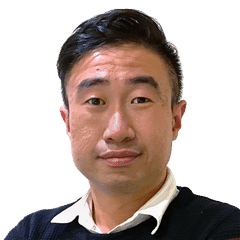Toyota to localise production and supply chains in US, China: President Koji Sato
Sign up now: Get ST's newsletters delivered to your inbox

Toyota Motor president Koji Sato replaced founding family scion Akio Toyoda at the helm of the automaker on April 1.
PHOTO: COURTESY OF TOYOTA MOTOR
Follow topic:
TOKYO – Toyota Motor aims to localise production as far as possible in the United States and China, in a bid to better cater to the vastly different markets and to hedge against geopolitical tensions, president and chief executive Koji Sato said on Friday.
Keeping an eye on risks is very important, he acknowledged at a small group interview with the media, including The Straits Times.
But above that, Toyota’s lodestar is to tailor its business plan to meet the diverging, “very different” needs of each market, he said.
Mr Sato, who replaced founding family scion Akio Toyoda at the helm of Toyota
A top priority is to grow the manufacturing capacity of battery electric vehicles (BEVs) in both markets, where Toyota has been left in the dust by America’s Tesla and China’s BYD.
“To expedite this, we should develop, procure and produce locally,” Mr Sato said. “We are working with partners to secure raw materials and properly manage supply chains.”
But this comes amid intensifying geopolitical competition between the world’s two largest economies, with the US trying to hobble China’s progress in advanced technology.
From July, Japan will join the United States in imposing curbs on the export of chipmaking equipment to China.
Mr Sato, noting China’s superiority in intelligent vehicles, said this called for a “bold and brave approach”.
Toyota has a “sense of crisis” in China, he added, where it has failed to keep pace with home-grown developers that have aggressively tapped an appetite for BEVs and plug-in hybrid electric vehicles.
The future of BEVs in China, where Toyota unveiled two new BEV models at the Auto Shanghai motor show this week, lies in “a more advanced, more intelligent type with added value”, Mr Sato observed.
But to build such a model, he said: “We need to cover every step from development, procurement to production. All these activities should be able to be conducted locally in China.”
Likewise for the US, Mr Sato said local development and production should also be emphasised, given such factors as business feasibility, profitability and productivity.
“As the main principle, logistics and distribution costs need to be lowered, and supply chain procurement should be compact,” he said.


